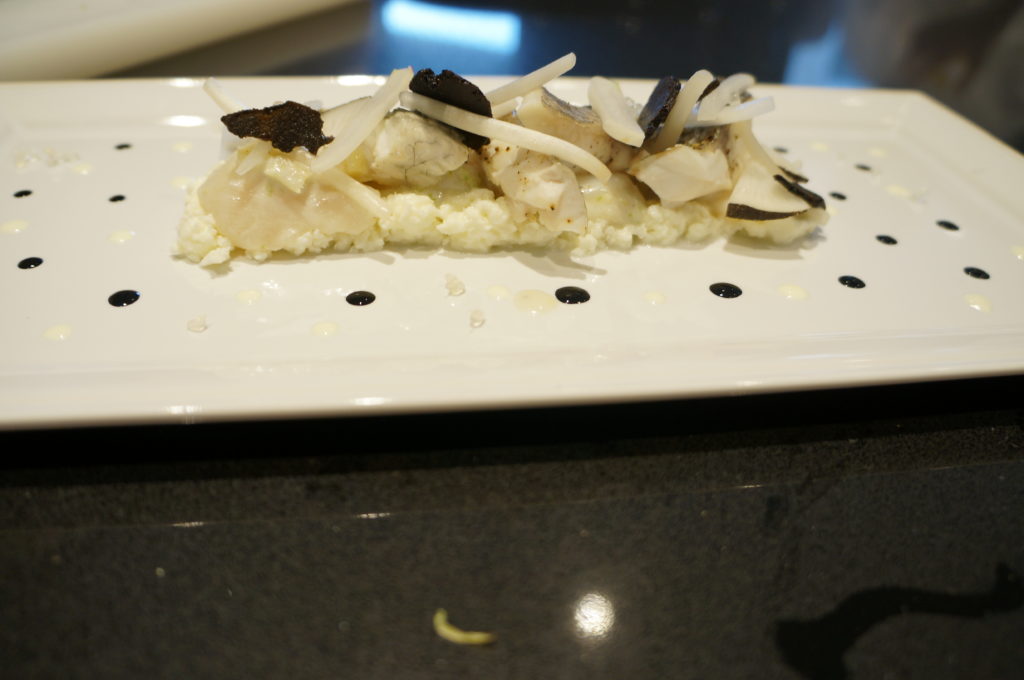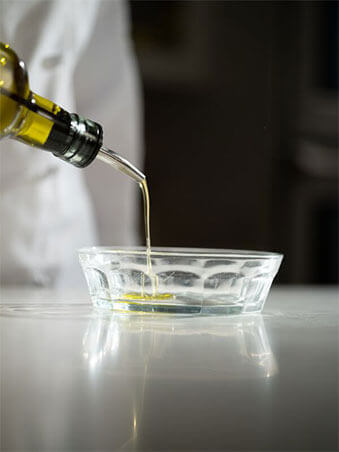By: Ryan Hodros, Culinary Arts Student
Our class had our regional cuisines practical this past week, and a pleasant side-effect of that was a twenty-or-so minute lull at the end of class where we got to pick Chef Kyle’s brain on various culinary topics. One of the subjects discussed was “truffle oil,” which is apparently a source of contention within the culinary community.
For any who don’t know, truffles are a subterranean fungus described by Jean Anthelme Brillat-Savarin as “the diamond of the kitchen.” This is both for its earthy, robust, and pungent flavor and for its massive price tag, with the record price paid for a single white truffle standing at $330,000 for a 3.3 lb truffle.
Though there are a number of varieties, they are primarily split between white and black truffles. The white are usually served raw, shaved extremely thin and added to fattier foods, butter, or oil. Black truffles tend to be far less pungent and are often used as canned truffles, truffle honey, and truffle salt. Both varieties are difficult to find and, to date, impossible to domesticate. Many modern truffle-hunters use trained hounds to sniff out wild truffles, eschewing the traditional truffle-pig because the latter had a tendency to eat the precious fungus before harvest.
If you’re like me, truffles are one of those things you’ve only ever experienced at the most important moments of your life, if at all. For me it was at my wedding reception dinner in Las Vegas, where I had medium rare duck with truffle shavings. You see it thrown around somewhat cavalierly on the Food Network, but even for the wealthy, truffles are a special event ingredient—not the sort of thing you just pick up at the market on a whim.
Truffle oil, on the other hand, is often completely unrelated to the delicacy people know and love. Most commercially-made truffle oil is made in a lab wherein common olive or grapeseed oil is infused with a trioether (one of a variety of chemicals in natural truffles) in order to impart that trademark flavor and aroma.
It is a shadow of the actual truffle, and has come under fire from a variety of big names in the culinary world. Anthony Bourdain, in the Croatia Episode of his hit show No Reservations, said, “”If I have a mission in life it’s to let people know that truffle oil is ****** up.” In a New York Times Article in 2007, Daniel Patterson went on record, saying, “Their one-dimensional flavor is also changing common understanding of how a truffle should taste.”
But therein lies the trouble. Because of the price, the vast majority of people world-wide will never get a chance to try a true truffle, and so commercially-made truffle oil is as close as most palates will ever get to the real thing. So of course everyone’s understanding will be skewed—if all you’ve ever had of beef in your life is hamburger, your understanding of how a steak tastes will be affected.
The primary issue with truffle oil as it applies to the everyday person is the price. You learn early on in the Auguste Escoffier program how to make infused oils. You take relatively neutral oil, heat it, and put your flavoring in to slowly steep. For a spicy dish, you can make jalapeno oil, or herb oil for a pasta dish, and so on. It’s not hard to make, relatively cheap, and a good way to infuse pure flavor into a dish without adding bulk or texture.
With truffle oil, you’re effectively buying a chemically-infused oil. Which is fine, if you’re okay with that sort of thing (whether or not chemicals belong in the kitchen is the subject of a different debate). Actual truffles never factor into the process, and yet some of these oils can go for over three dollars an ounce simply because of the word “truffle” in the name. So you get inferior flavor for an unnecessarily high price just for the honor of having “truffle” on your menu.
That being said, I also think that “truffle oil” is getting something of a bad reputation as a result of this. There is an all-natural, but much more expensive way to make truffle oil. Slice your truffles as thin as possible and slowly steep the flavor into the oil, same as any infused oil. Rather than including one aromatic note from the fungus, it brings out all the flavors (though comparatively muted) which can be used to add truffle flavor to a dish.
So how do you tell the difference? My research indicated that naturally made truffle oil will solidify when refrigerated. Unfortunately, allowing your truffle oil to continually solidify and liquefy could degrade the flavor of the truffle oil, so it’s something of a catch 22. The solution is to dribble a tiny amount of the oil onto a plate and put the plate in the fridge. If that spot of oil goes solid, you’ve got the (relatively) good stuff.
Talking about Truffles is usually a sticky subject, because the population of people who have tried them (and as a result, care about them) is so small. But with their popularity on the rise due to the Food Network and similar media, it’s becoming easier and easier for food manufacturers to capitalize on that fame by selling inferior products at an inflated price.
Ultimately, it’s a complex problem that can be boiled down to one simple point—until someone figures out how to domesticate them, if you want truffles, you’re going to have to hunt them yourself or pay for them. There’s no such thing as discount truffle flavor.





